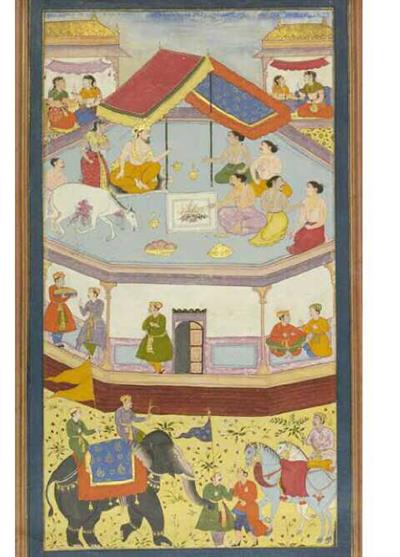
PUMPA - SMART LEARNING
எங்கள் ஆசிரியர்களுடன் 1-ஆன்-1 ஆலோசனை நேரத்தைப் பெறுங்கள். டாப்பர் ஆவதற்கு நாங்கள் பயிற்சி அளிப்போம்
Book Free DemoIrrigation:

Velvikudi Grant of Nedunjadaiyan was issued about 770 CE. Religion:
The Pandyas were patrons of Vedic practises. Every great Pandya king performed rituals such as Asvameda Yaga, Hiranya garbha, and Vajapeya yaga, according to Velvikkudi copper plates and inscriptional sources. In the inscriptions' invocatory portions, rulers' impartiality against both Saivism and Vaishnavism is also shown. Land grants, tax exemptions, and renovations were all given to temples of both sects.

Ashvameda Yaga
The combined efforts of the great Saiva and Vaishnava saints (Nayanmaras and Alwars) aided Tamil literature and spiritual enlightenment. During this time, there was a lot of religious strife. The Bhakti movement of the time sparked a debate among heterodox scholars. In Bhakti literature, there are several examples of Buddhists and Jains losing such arguments. Tamil and Sanskrit were sponsored and encouraged by the Pandya kings of the time.
Temples:
The Pandyas of the Middle Ages and Later Periods did not establish any new temples but instead maintained the existing ones, enlarging them with gopuras and mandapas. Its monolithic mega-sized ornamented pillars distinguish the mediaeval Pandya style.

Vettuvan koil (Monolithic temple), Kalugumalai, Tuticorin.
Pandya kingdom, 8th century CE.
The best sculptures in these temples are Siva, Vishnu, Kotravai, Ganesa, and Subramanya. Pandyas were especially fond of Madurai's historic Meenakshi temple, which was constantly expanding its grounds by adding gopuras and mandapas.
Trade:
From the 7th century onwards, the Arab settlements on the west coast of southern India expanded their trade links to the east coast. The governments of the east coast continued a liberal and enlightened policy towards overseas traders. Their charters excused traders from various types of port dues and tolls. Malik-ul-Islam Jamal-ud-din, the agency established by an Arabs in Kayal port, facilitated the trade of horses to Pandyan rulers.
In the 13th and 14th centuries, the horse trade became active. Those who were trading in horses were called kudirai chetties and were engaged in maritime trade also. The busiest port town under the Pandyas was Kayal Pattinam (now in Thoothukudi district) on the east coast. The trade was carried through the medium of gold coins and was called kasu, kalanchu and pon.
Reference:
https://commons.wikimedia.org/wiki/File:8th_Century_Vatteluttu_script_Tamil_language_Velvikudi_Grant,_LINES_47-56.jpg
https://commons.wikimedia.org/wiki/File:Ashwamedha_yagna_of_yudhisthira.jpg
https://commons.wikimedia.org/wiki/File:S-TN-71_Vettuvan_Koil_Tuticorin.jpg